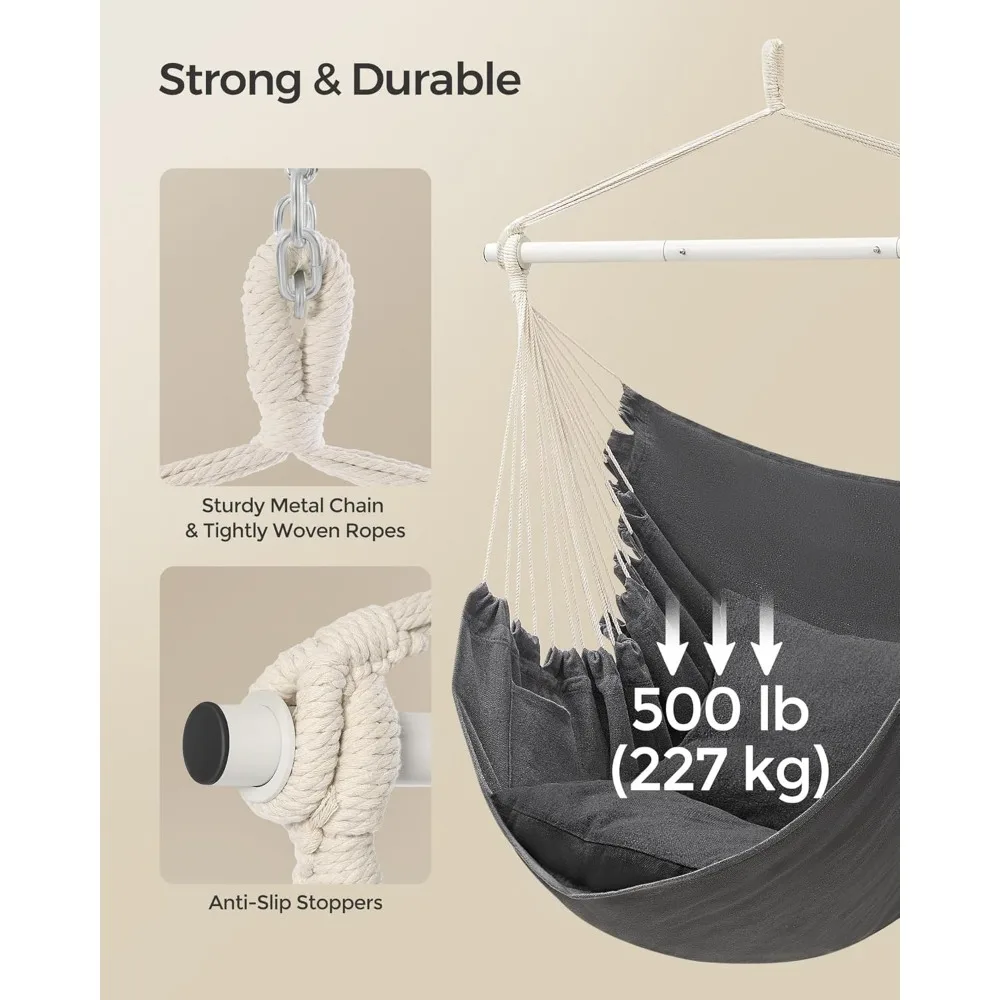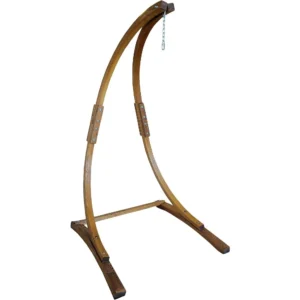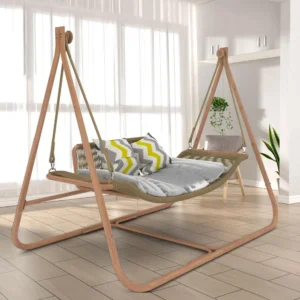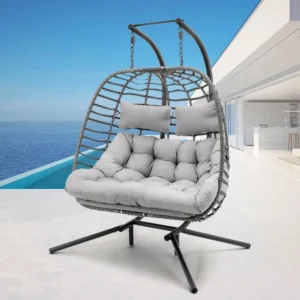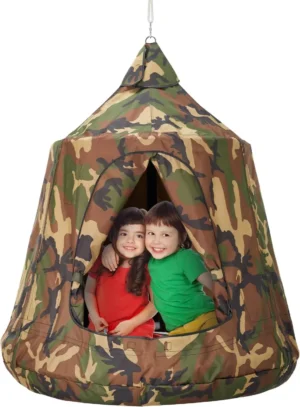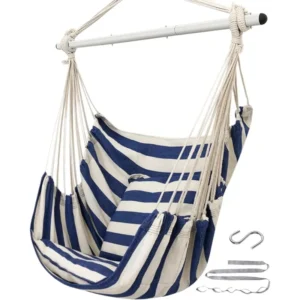Introduction to Hammock Chairs and Their Terminology
A hammock chair is a unique piece of furniture that combines the suspended nature of a hammock with the comfortable seating position of a chair. Unlike traditional hammocks that require you to lie horizontally, these hanging seats allow you to sit in a relaxed, semi-reclined position while gently swinging or swaying. They create a distinctive floating sensation that many find incredibly calming.
These versatile pieces of furniture have gained tremendous popularity in recent years, appearing in both indoor and outdoor spaces. However, if you’ve been shopping for one, you may have noticed they go by many different names, which can make finding the perfect option somewhat confusing.
Understanding the various terms used for hammock chairs is important because:
– It helps you find exactly what you’re looking for when shopping
– It clarifies the differences between similar but distinct products
– It gives you insight into design features and intended use
In this article, we’ll explore the many names of hammock chairs, including:
– Common alternative terms
– Specialty variations with unique names
– How materials affect terminology
– Indoor versus outdoor naming differences
– Regional variations in terminology
A typical hammock chair features a fabric seat that suspends from a single hanging point, creating a cradling effect that conforms to your body. This distinctive design emerged as a popular alternative to traditional hammocks in the mid-20th century and has continued to evolve with numerous variations.
The terminology used for hammock chairs on covered porches has expanded significantly as these versatile seats have become increasingly popular. For visual inspiration, exploring different hammock chair ideas for ultimate relaxation can help you understand the variety available in today’s market.
Common Alternative Names for Hammock Chairs
When searching for hammock chairs, you’ll encounter several common alternative terms that refer to essentially the same product. Understanding these variations will make your shopping experience much easier:
Hanging Chair
Perhaps the most widespread alternative term, “hanging chair” emphasizes the suspended nature of the seat. This name focuses on how the chair is mounted rather than its construction materials or specific design. The term is universally recognized in retail settings and is often used interchangeably with hammock chair, particularly for models with more structured seating areas.
Swing Chair
This term highlights the gentle swinging motion these chairs provide. Swing chairs may sometimes feature slightly different suspension systems that encourage a more pronounced forward-and-back swinging motion rather than the omnidirectional sway of some hammock chairs. The term is especially popular for both indoor and outdoor models.
Suspended Chair
A more formal-sounding alternative that emphasizes the chair’s floating quality. This terminology is often used for more premium or designer versions of hammock chairs, particularly in interior design contexts. The focus is on the elevated, floating experience rather than the swinging motion.
Hammock Seat/Swing
These terms combine elements of both hammocks and swings. “Hammock seat” emphasizes the cradling, fabric-based construction similar to traditional hammocks but in a seated form. This terminology is often applied to more casual, fabric-based designs that closely resemble traditional hammocks in material and construction.
Sky Chair
A more playful and evocative name that highlights the elevated, floating feeling these chairs provide. The term is less common in mainstream retail but appears frequently in specialty outdoor and adventure retailers, emphasizing the “up in the air” feeling of relaxation.
In retail settings, you’ll most commonly encounter “hanging chair” and “hammock chair” as the predominant terms, with regional preferences varying slightly. North American retailers tend to favor “hammock chair,” while European markets often prefer “hanging chair” or “suspended chair.”
Our collection of hammock chairs and stands showcases these various terminology differences, while our swinging hammock chair sets demonstrate how these terms appear in actual product listings.
Specialty Types of Hammock Chairs and Their Unique Names
Beyond the basic terminology, several specialty types of hammock chairs have developed their own distinct names based on unique design elements, materials, or construction methods:
Egg Chair/Hanging Egg Chair
These distinctive chairs feature an enclosed, oval-shaped design resembling an egg with an opening in the front. Unlike traditional hammock chairs that have an open design, egg chairs create a cozy, cocoon-like environment. They typically have a rigid frame (often made of rattan, wicker, or metal) covered with cushions, providing both structure and comfort. The egg shape offers additional privacy and wind protection, making them popular for both indoor and outdoor use.
Macrame Swing Chair
Celebrating traditional craftsmanship, macrame swing chairs feature intricate knotted patterns created using cotton or synthetic cord. These chairs showcase decorative knotting techniques that form both the seat and the suspension system. The emphasis is on both aesthetics and function, with the elaborate patterns serving as both decoration and support. These chairs have a distinctive bohemian style that makes them popular in eclectic or natural-themed decor.
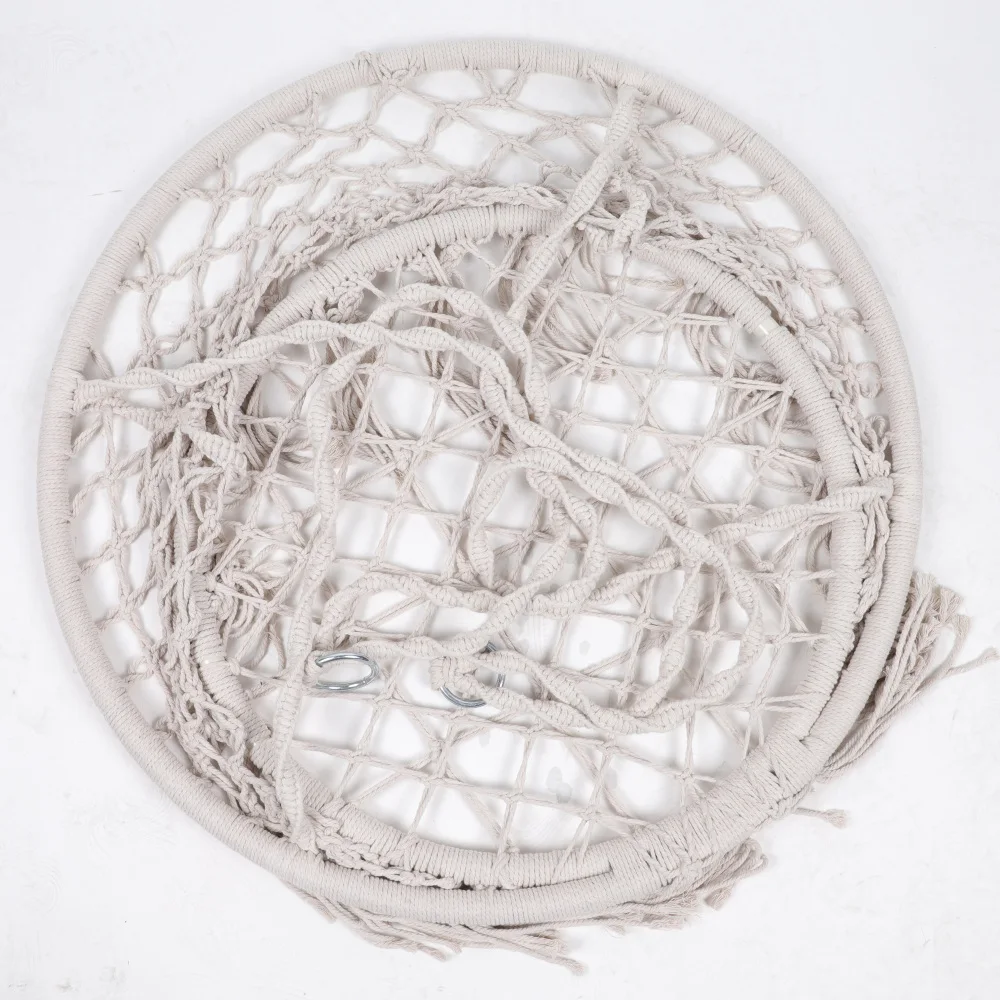
Pod Chair/Cocoon Chair
Similar to egg chairs but with even more enclosed designs, pod or cocoon chairs create a sense of being wrapped in a protective shell. These chairs often hang from a single point and envelop the sitter almost completely. The design prioritizes privacy and insulation from surroundings, making them excellent reading nooks or meditation spaces. They frequently feature thicker cushioning than standard hammock chairs.
Brazilian Hammock Chair
Drawing inspiration from traditional Brazilian hammocks, these chairs use tightly woven cotton fabric that creates a deep pocket seat. The distinctive feature is the lack of spreader bars, allowing the fabric to wrap around the sitter more completely. This design creates excellent weight distribution and typically allows for a variety of seated positions. Brazilian hammock chairs are known for their exceptional comfort and durability.
Hanging Basket Chair/Wicker Hanging Chair
These chairs feature a basket-like structure, typically made from woven natural materials like rattan, wicker, or bamboo. The rigid basket creates a structured seat that hangs from a single point or chain system. While less “hammock-like” than fabric versions, they provide more structure while maintaining the suspended, swinging experience. The natural materials give them a distinctive look that works well in sunrooms, patios, and bohemian-styled spaces.
Swing Seat
A simpler, sometimes smaller variation that emphasizes function over lounging. These typically have a more defined seat area and may include a backrest, but generally have less fabric wrapping around the sides. The design prioritizes the swinging motion over the cradling effect of traditional hammock chairs. They’re often more compact, making them suitable for smaller spaces.
Our hanging egg chair sets showcase the distinctive design of these specialty chairs. When selecting any hammock chair style, it’s worth considering how much weight a hammock chair can hold as capacity varies significantly between these different designs.
Understanding Materials and Their Influence on Terminology
The materials used in constructing hammock chairs significantly influence their names, comfort, durability, and aesthetic appeal. Different materials create distinct experiences and are often highlighted in product terminology:
Fabric Hammock Chairs
Fabric-based hammock chairs emphasize comfort and conformity to the body. These designs typically use materials like:
Cotton: Often labeled as “cotton hammock chairs” or “organic hanging chairs,” these provide breathability and softness. Cotton hammock chairs are frequently described using terms like “natural” or “traditional” and are prized for their comfort against bare skin.
Polyester: Products using synthetic fabrics might be marketed as “weather-resistant hammock chairs” or “all-season hanging seats.” These materials offer enhanced durability and resistance to fading, often appearing in descriptions that emphasize longevity and easy maintenance.
Canvas: Heavier-duty fabric options may be called “canvas hanging chairs” or “durable suspension seats.” The terminology around canvas options tends to highlight strength and weight capacity, appealing to those seeking robust options.
Woven Chairs
Chairs featuring woven construction techniques create distinctive textures and visual interest:
Macrame: Beyond being a style category, macrame appears in product names like “macrame swing seat” or “knotted hanging chair.” The terminology often references the handcrafted nature and artistic patterns of these pieces.
Rope: Terms like “rope hammock chair” or “nautical hanging seat” emphasize the twisted or braided rope construction. These names often evoke coastal themes and highlight the airflow benefits of rope construction.
Wicker/Rattan: Products made from these materials may be called “wicker basket chairs” or “rattan suspended seats.” The terminology typically emphasizes the natural material source and traditional craftsmanship.
Rigid Material Chairs
Chairs incorporating more structured elements use terminology that highlights stability and design:
Metal Components: Products with metal frames might be marketed as “steel-framed hanging chairs” or “aluminum suspension seats.” These terms emphasize durability and structural integrity.
Wood Elements: Chairs incorporating wood are often called “wooden hanging chairs” or “natural frame suspended seats.” The terminology frequently highlights sustainability and natural aesthetics.
The materials used in hammock chairs for porches significantly influence not just their names but also their comfort and functionality. Material choice even affects whether you can sleep in a hammock chair comfortably, with certain fabrics and constructions providing better support for extended relaxation.
Indoor vs. Outdoor Hammock Chair Terminology
The intended environment for hammock chairs significantly influences their naming conventions, with distinct terminology emerging for indoor and outdoor models:
Indoor Terminology Focus
Indoor hammock chair terminology emphasizes:
Comfort and Aesthetics: Terms like “interior hanging lounge,” “decorative suspension chair,” or “living room hammock seat” highlight how the piece fits into home decor.
Design Elements: Phrases such as “designer hanging chair,” “statement suspended seat,” or “accent swing chair” position these as fashion-forward furniture pieces.
Space Considerations: Terms like “compact hanging chair,” “corner hammock seat,” or “apartment swing chair” address the practical concerns of indoor placement.
Outdoor Terminology Focus
Outdoor hammock chair terminology emphasizes:
Weather Resistance: Labels such as “all-weather hanging chair,” “UV-resistant hammock seat,” or “waterproof swing chair” highlight durability against the elements.
Location Specificity: Terms like “patio hammock chair,” “garden hanging seat,” “poolside swing chair,” or “deck suspension chair” suggest optimal placement locations.
Portability: Phrases such as “portable outdoor hammock chair” or “travel swing seat” emphasize mobility for various outdoor settings.
Universal Terminology
Some terms effectively cross both environments:
“Versatile hammock chair” or “indoor/outdoor hanging seat” explicitly mentions dual-environment compatibility
“Year-round swing chair” suggests adaptability to different seasons and settings
“Adjustable hammock seat” focuses on functionality that works in multiple environments
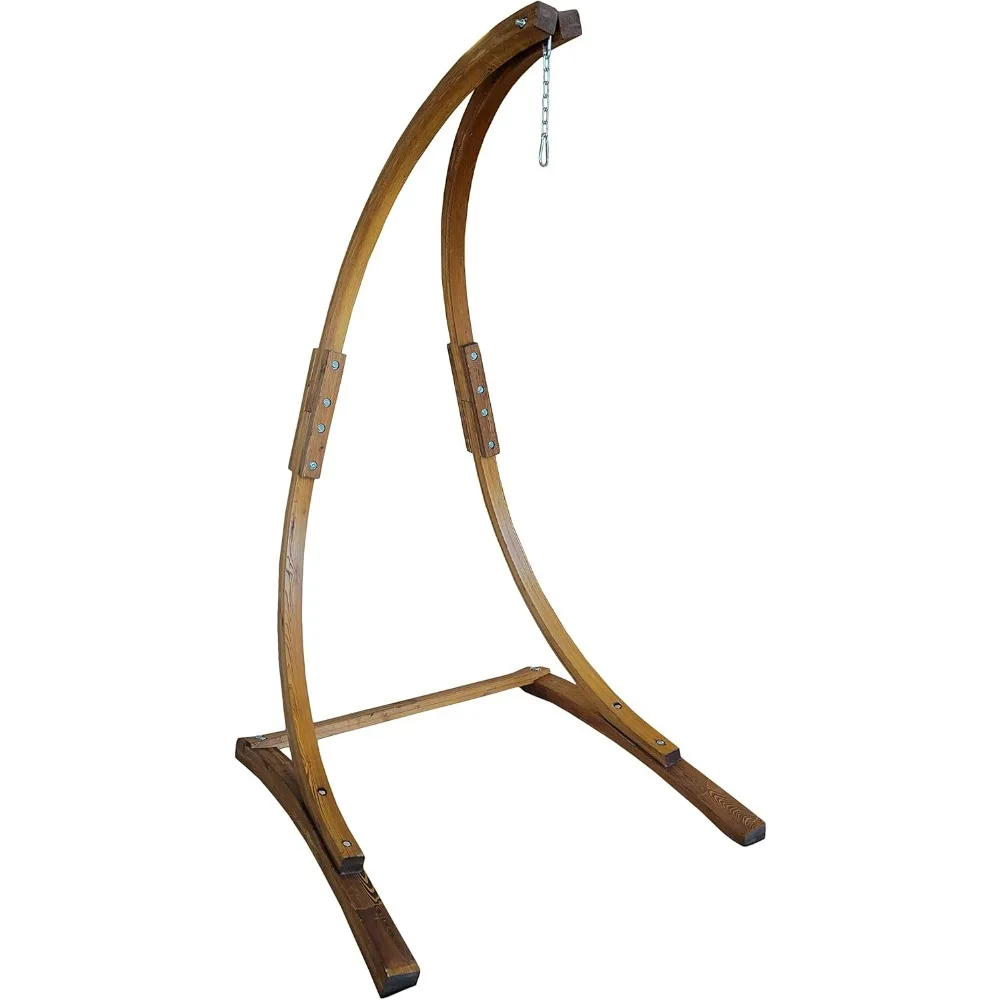
Marketing language also shifts between these environments, with indoor products highlighting “luxury,” “comfort,” and “style,” while outdoor versions emphasize “durability,” “weather resistance,” and “versatility.” Understanding these distinctions helps identify whether a weather-resistant hammock chair for your porch will suit your needs or if you’d be better served by deep seat chair hammock sets designed for indoor comfort.
Key Distinctions Between Related Products
When shopping for hammock chairs, you’ll encounter several similar products that, despite sharing characteristics, have important differences. Understanding these distinctions will help you identify exactly what you’re looking for:
| Product | Primary Differences | Key Characteristics |
|---|---|---|
| Hammock Chair | Combines sitting position with hammock suspension | Single-point hanging, cradling fabric seat, semi-reclined position |
| Traditional Hammock | Designed for lying horizontally | Suspended at two ends, full-body support, horizontal position |
| Standing Hammock | Self-supporting without needing installation | Includes built-in frame, no mounting required, portable |
| Porch Swing | Rigid seat with hanging suspension | Bench-like seat, often accommodates multiple people, swings in one direction only |
| Papasan Chair | Bowl-shaped seat on a base (not suspended) | Large round cushion, stationary base, not suspended |
Hammock Chair vs. Traditional Hammock
While both provide suspended relaxation, hammock chairs support a seated or semi-reclined position through a single hanging point. Traditional hammocks require two mounting points and are designed for full horizontal lying. Hammock chairs take up less space and provide a different relaxation experience focused on comfortable sitting rather than lying down.
Hammock Chair vs. Standing Hammock
The key difference lies in the support structure. Hammock chairs require mounting to a ceiling, beam, tree, or separate stand. Standing hammocks incorporate their own support frame, making them completely self-contained and portable. While both offer similar comfort, standing hammocks eliminate installation concerns but take up more floor space.
Hammock Chair vs. Porch Swing
While both hang from above, porch swings typically feature rigid bench-like seating for multiple people and swing in a single forward-backward motion. Hammock chairs usually accommodate one person, feature more flexible fabric construction, and allow for multidirectional movement. Porch swings emphasize the swinging motion, while hammock chairs emphasize the cradling, floating sensation.
Hammock Chair vs. Papasan Chair
Though both offer bowl-shaped seating, papasan chairs sit on a stationary base rather than hanging suspended. Papasan chairs provide a fixed position without movement, while hammock chairs offer the gentle motion that many find relaxing. The suspended nature of hammock chairs creates an entirely different sensory experience despite similar seating positions.
Our porch swing chair sets demonstrate the design differences between traditional porch swings and hammock chairs, showing how suspension systems and seating design create distinct experiences.
Regional and Cultural Naming Variations
Hammock chairs have deep roots in various cultures around the world, resulting in diverse regional naming conventions that reflect local traditions and craftsmanship:
South American Influences
In South America, particularly Brazil and Colombia, hammock chairs draw from centuries-old hammock traditions:
- The term “Brazilian hanging chair” typically refers to designs with tightly woven cotton that creates a deep pocket seat.
- “Colombian silla hamaca” (hammock chair) often features colorful, hand-woven patterns reflecting indigenous textile traditions.
- “Yucatan swing seat” references the Mexican peninsula’s distinctive hammock-making heritage, often featuring string or thin rope construction.
These South American designs typically emphasize handcrafted quality and traditional weaving techniques passed down through generations.
Scandinavian Design Terminology
In Scandinavian countries, terminology reflects the region’s modern design aesthetic:
- “Hanging cocoon” or “suspended pod” emphasizes enclosed, protective designs popular in colder climates.
- “Nordic swing chair” typically features clean lines, minimalist aesthetics, and natural materials like wood and undyed cotton.
- “Hygge hanging seat” incorporates the Danish concept of coziness and comfortable conviviality.
Scandinavian designs often focus on the balance between form and function, creating visually appealing pieces that still prioritize comfort.
Southeast Asian Naming Conventions
Southeast Asian terminology reflects the region’s abundant natural materials and traditional crafting techniques:
- “Rattan hanging basket” or “suspended rattan nest” emphasizes the use of this flexible, sustainable palm material.
- “Bamboo sky chair” highlights another sustainable regional material used in furniture making.
- “Island swing seat” evokes the laid-back lifestyle associated with tropical island cultures.
These designs frequently incorporate intricate weaving techniques that showcase artisanal skills particular to specific regions.
North American Retail Terminology
In North American markets, terminology tends to be more function-focused:
- “Hanging chair” and “hammock chair” are the most common generic terms.
- “Indoor/outdoor swing seat” emphasizes versatility for different environments.
- “Suspended lounge chair” positions the product as a premium relaxation piece.
North American terms often focus on functionality and setting rather than cultural heritage or crafting techniques.
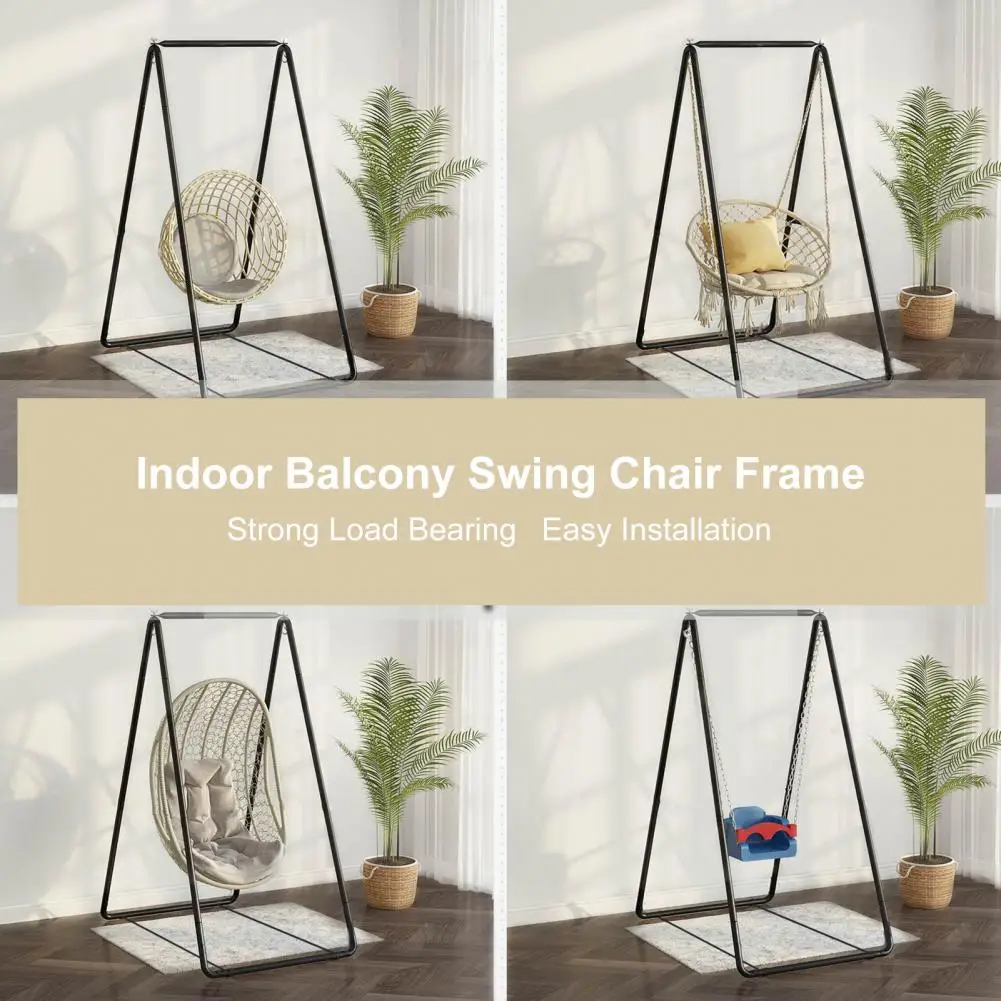
How to Choose the Right Hammock Chair Based on Terminology
Understanding hammock chair terminology can significantly improve your shopping experience and help you find the perfect match for your needs:
Decoding Product Descriptions
Different terms in product descriptions signal specific features:
– “Weather-resistant” or “all-season” indicates outdoor suitability with materials that resist UV damage and moisture
– “Macrame” suggests decorative knotting techniques and often a bohemian aesthetic
– “Quilted” typically means added padding for comfort
– “Spreader bar” indicates a design element that keeps the chair more open rather than wrapping around you
Weight Capacity Terminology
Pay close attention to weight specifications:
– “Single” typically supports 200-300 pounds
– “Heavy-duty” usually indicates support for 300+ pounds
– “Reinforced” suggests additional structural elements for increased stability
– “Commercial grade” often signals the highest weight capacity, designed for public or high-traffic use
Searching Effectively
Use specific terms to narrow your search for particular features:
– For maximum comfort: search “deep seat hammock chair” or “padded hanging chair”
– For outdoor use: try “weather-resistant hammock chair” or “outdoor hanging seat”
– For aesthetic appeal: search “decorative hammock chair” or “macrame hanging seat”
– For space constraints: try “compact hammock chair” or “small-space hanging seat”
Installation Terminology
Understanding mounting terms helps ensure proper setup:
– “Ceiling mount” requires structural ceiling support
– “Spring assembly” indicates a component that adds bounce and absorbs shock
– “Spreader bar” keeps the chair open in a more defined shape
– “Swivel mount” allows for 360-degree rotation
The setup tips for hammock chairs on roofs provide valuable insights into installation terminology, while guidance on perfectly positioning your swing hammock chair helps translate positioning terminology into practical setup.
Dark Wood Hammock Sets, Porch Swing Chair Sets
$653.82 Select options This product has multiple variants. The options may be chosen on the product pageA-Frame Stand Hammock Sets, Swinging Hammock Chair Sets
$154.62 Select options This product has multiple variants. The options may be chosen on the product pageLight Wood Hammock Sets, Swinging Hammock Chair Sets
$1,359.35 Select options This product has multiple variants. The options may be chosen on the product page- $963.29 Select options This product has multiple variants. The options may be chosen on the product page
Complete Camping Hammock Systems, Hanging Egg Chair Sets
$266.73 Select options This product has multiple variants. The options may be chosen on the product pageDeep Seat Chair Hammock Sets, Hanging Egg Chair Sets
$165.85 Select options This product has multiple variants. The options may be chosen on the product page
Is a Hammock Chair the Same as a Hanging Chair?
This is one of the most common questions regarding hammock chair terminology, and the answer involves some subtle nuances:
In most retail contexts, the terms “hammock chair” and “hanging chair” are used interchangeably and refer to the same basic product category: suspended seats that hang from above. However, there are some slight distinctions in how these terms are sometimes applied:
- Hammock Chair typically emphasizes:
- Fabric construction similar to traditional hammocks
- More wrap-around, cradling design
- Flexible, conforming seating surface
Connection to traditional hammock heritage
Hanging Chair sometimes emphasizes:
- Broader category including more rigid designs
- May include wicker, rattan, or metal construction
- Could refer to any chair that hangs, including more structured options
- Less specific about the material or construction method
Most manufacturers and retailers use these terms interchangeably, with regional preferences often determining which term predominates. In practice, you’ll find identical products labeled both ways, especially in online marketplaces.
When shopping, it’s more important to look at specific features, materials, and design elements rather than focusing exclusively on whether the product is called a “hammock chair” or “hanging chair.” The inspiring covered porch hammock chair examples show how these terms overlap in real-world applications.
FAQs About Hammock Chair Terminology
What is the hanging mechanism of a hammock chair called?
The hanging mechanism is typically called a “suspension system” or “hanging kit.” This usually includes components like rope, chain, carabiners, a spring (for bounce and shock absorption), and a swivel hook (allowing for rotation). The ceiling attachment point is often called a “mounting plate” or “ceiling anchor.”
What’s the difference between a swing chair and a hammock chair?
While often used interchangeably, swing chairs sometimes refer to designs that emphasize forward-and-backward motion with a more defined shape, while hammock chairs typically feature more flexible fabric construction that cradles the body. The distinction isn’t standardized across the industry, however, and many products use both terms in their descriptions.
Are egg chairs and cocoon chairs the same thing?
Though similar, egg chairs typically feature an oval or egg-shaped design with an opening in front, while cocoon chairs often have a more fully enclosed, pod-like structure that wraps further around the occupant. Egg chairs usually allow for more visibility and openness, while cocoon chairs emphasize privacy and insulation from surroundings.
What do you call the stand for a hammock chair?
The support structure for a hammock chair is most commonly called a “hammock chair stand” or “hanging chair stand.” More specific variations include “C-stand” (referring to the curved C-shape design), “hammock chair frame,” or “free-standing hammock chair support.” Some manufacturers also use terms like “hammock chair tower” or “suspension stand” for taller models.

